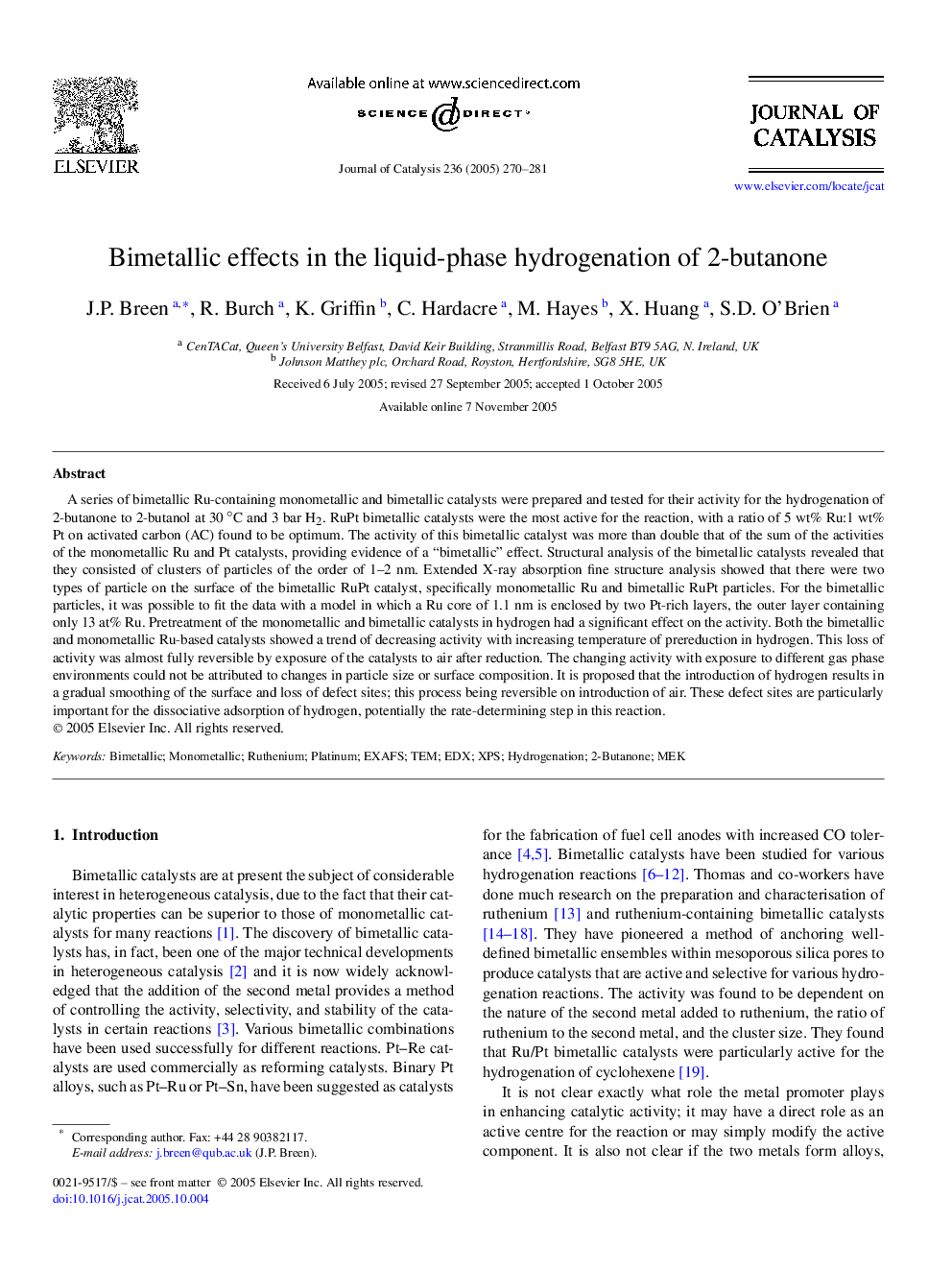| کد مقاله | کد نشریه | سال انتشار | مقاله انگلیسی | نسخه تمام متن |
|---|---|---|---|---|
| 10244387 | 47681 | 2005 | 12 صفحه PDF | دانلود رایگان |
عنوان انگلیسی مقاله ISI
Bimetallic effects in the liquid-phase hydrogenation of 2-butanone
دانلود مقاله + سفارش ترجمه
دانلود مقاله ISI انگلیسی
رایگان برای ایرانیان
کلمات کلیدی
موضوعات مرتبط
مهندسی و علوم پایه
مهندسی شیمی
کاتالیزور
پیش نمایش صفحه اول مقاله

چکیده انگلیسی
A series of bimetallic Ru-containing monometallic and bimetallic catalysts were prepared and tested for their activity for the hydrogenation of 2-butanone to 2-butanol at 30â°C and 3 bar H2. RuPt bimetallic catalysts were the most active for the reaction, with a ratio of 5 wt% Ru:1 wt% Pt on activated carbon (AC) found to be optimum. The activity of this bimetallic catalyst was more than double that of the sum of the activities of the monometallic Ru and Pt catalysts, providing evidence of a “bimetallic” effect. Structural analysis of the bimetallic catalysts revealed that they consisted of clusters of particles of the order of 1-2 nm. Extended X-ray absorption fine structure analysis showed that there were two types of particle on the surface of the bimetallic RuPt catalyst, specifically monometallic Ru and bimetallic RuPt particles. For the bimetallic particles, it was possible to fit the data with a model in which a Ru core of 1.1 nm is enclosed by two Pt-rich layers, the outer layer containing only 13 at% Ru. Pretreatment of the monometallic and bimetallic catalysts in hydrogen had a significant effect on the activity. Both the bimetallic and monometallic Ru-based catalysts showed a trend of decreasing activity with increasing temperature of prereduction in hydrogen. This loss of activity was almost fully reversible by exposure of the catalysts to air after reduction. The changing activity with exposure to different gas phase environments could not be attributed to changes in particle size or surface composition. It is proposed that the introduction of hydrogen results in a gradual smoothing of the surface and loss of defect sites; this process being reversible on introduction of air. These defect sites are particularly important for the dissociative adsorption of hydrogen, potentially the rate-determining step in this reaction.
ناشر
Database: Elsevier - ScienceDirect (ساینس دایرکت)
Journal: Journal of Catalysis - Volume 236, Issue 2, 10 December 2005, Pages 270-281
Journal: Journal of Catalysis - Volume 236, Issue 2, 10 December 2005, Pages 270-281
نویسندگان
J.P. Breen, R. Burch, K. Griffin, C. Hardacre, M. Hayes, X. Huang, S.D. O'Brien,